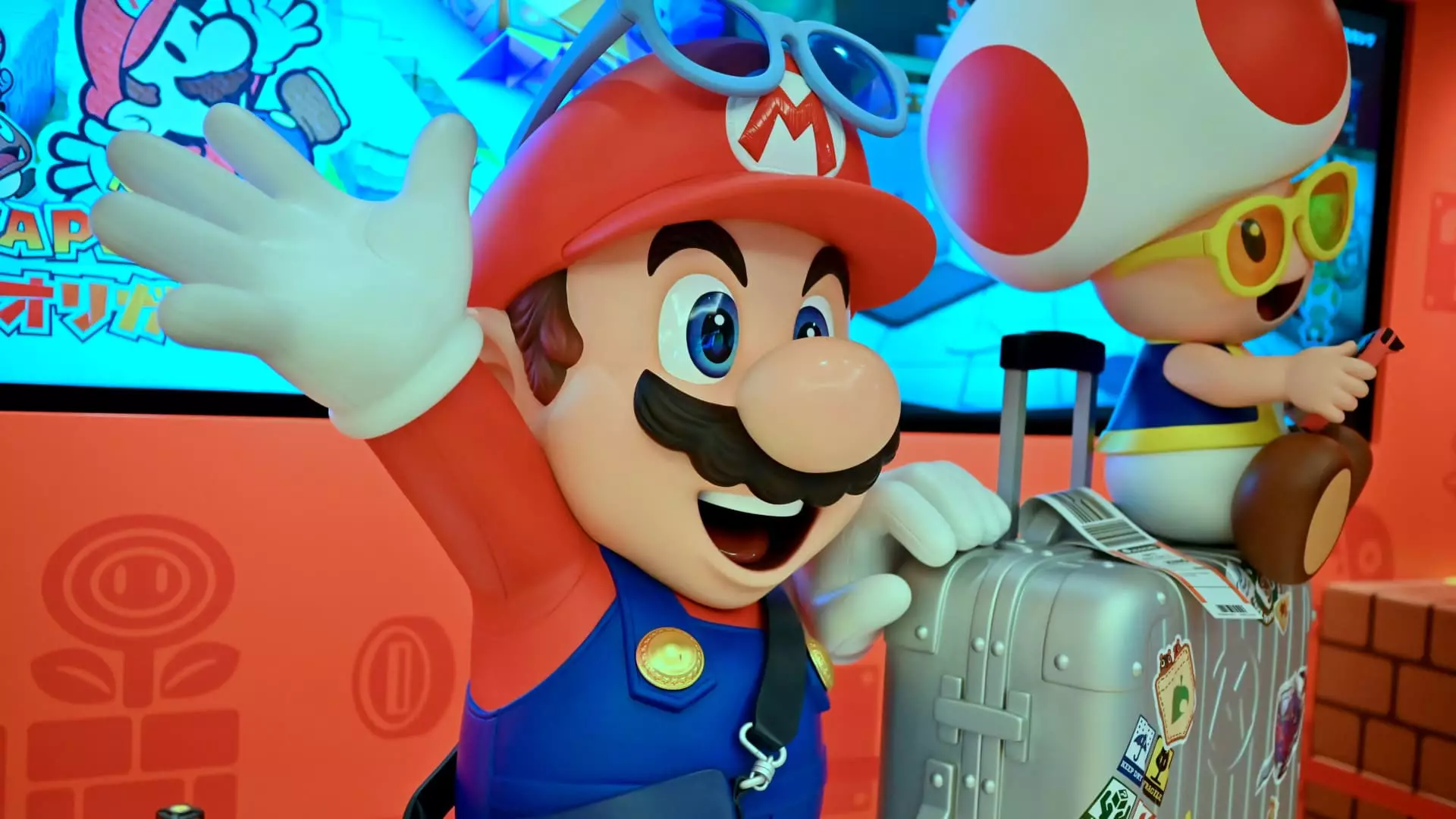Nintendo recently unveiled its fiscal third quarter results, concluding on December 31, and the figures reveal a troubling narrative for the iconic gaming giant. The company reported a revenue of 432.92 billion Japanese yen ($2.8 billion), falling significantly short of the LSEG estimate of 498.22 billion yen. In addition, the projected net profit of 128.53 billion yen also lagged behind expectations, which were set at 136.16 billion yen. A notable highlight is that this represents a 6% decline in net profit compared to the same quarter last year. These results illustrate a concerning trend for Nintendo as it navigates the complex landscape of gaming.
While the recent quarterly results were disappointing, focus has now shifted towards Nintendo’s highly anticipated next-generation console, the Switch 2. Given that the original Switch debuted back in 2017 and has become a cornerstone of Nintendo’s success, expectations are high. Speculations surrounding the Switch 2 came to the forefront last month when Nintendo teased its features in a promotional trailer. Furthermore, early indications suggest compatibility between select Switch games and the new console, yet specific details regarding pricing and an official release date remain cloaked in ambiguity, with fans eagerly awaiting the Nintendo Direct event scheduled for April 2.
In its bid to keep the aging Switch relevant, Nintendo has engaged in several strategies, including the release of updated versions of the current console and leveraging multimedia ventures like films centered around iconic characters such as Super Mario. Despite these efforts, gamer enthusiasm appears to be waning. In light of this, Nintendo has revised its full-year sales forecasts downward, now aiming to sell 11 million Switch units, down from an earlier estimate of 12.5 million. Furthermore, their projected net profit now stands at 270 billion yen, reflecting a notable cut from the prior forecast of 300 billion yen.
The sales data for the December quarter lends credence to the idea of diminished interest; Nintendo sold only 4.82 million Switch consoles during the fiscal third quarter, accumulating a total of 9.54 million units for the current fiscal year, which marks a staggering 30.6% drop year-on-year. Since its launch, the conventional Switch has enjoyed robust sales, amounting to 150.86 million units, positioning it as Nintendo’s second-most successful console—just behind the Nintendo DS, which sold 154.02 million units. However, as the console ages, the uphill battle for maintaining user engagement becomes clearer.
According to George Jijiashvili, a senior principal analyst at Omdia, Nintendo faces a delicate balancing act. The enviable success of the Switch has birthed its own set of challenges. While the existing user base is substantial—approximately 129 million active users—Nintendo’s next task is to effectively appeal to this audience regarding the merits of upgraded hardware. Jijiashvili articulated this sentiment, asserting that the company is well-prepared for the launch of its new console. However, he also warned that transitioning users to the Switch 2 without alienating those who choose to stick with the original model presents a nuanced challenge.
Industry metrics predict that the Switch 2 is likely to hit the market in the first half of 2025, with estimates suggesting that it could sell around 14.7 million units in its debut year. Yet, Jijiashvili emphasizes the monumental task ahead for Nintendo—expectations of the new console surpassing the original Switch in sales compose a formidable undertaking. The path forward is riddled with challenges, but if Nintendo can balance the legacy of the original Switch with innovative features that resonate with consumers, the company could potentially navigate this transitional phase successfully.
While Nintendo’s current fiscal report raises alarms, the true measure of its future success will hinge on its ability to innovate and engage its user base as it prepares to unveil the Switch 2. As the gaming landscape continues to evolve, so too must Nintendo adapt, making this upcoming phase a critical juncture for the beloved company.

